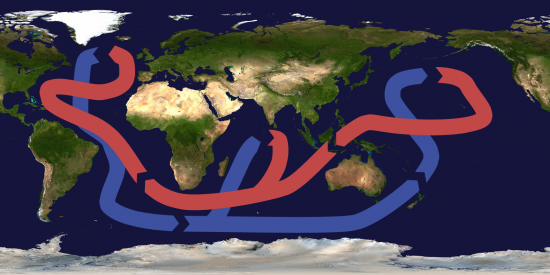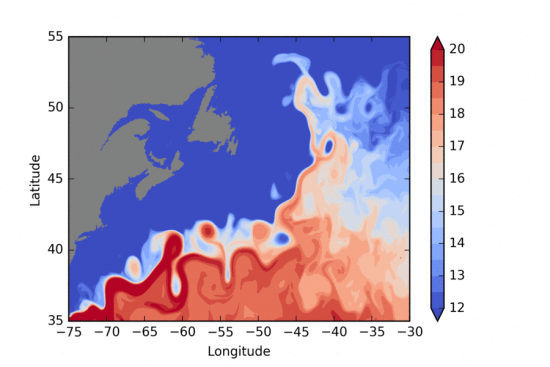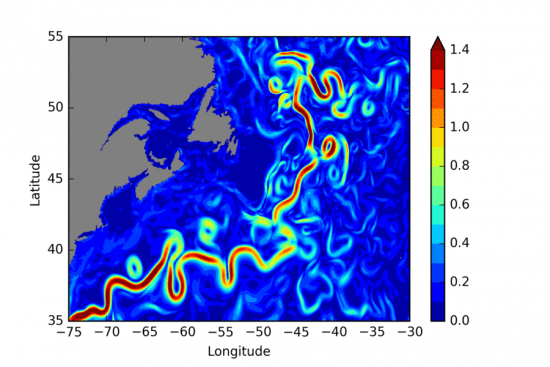




New finding will lead to better climate simulations
Consider the Gulf Stream as Northern Europe’s hot-water heating system.
As like the Kuroshio (its counterpart in the Pacific), its currents
play an important role in the development of the global climate. And
now, researchers have demonstrated that the strength of the currents
are dependent on the energy exchange between current-generated eddies
and the atmosphere.
Major western boundary currents like the Gulf Stream and the Kuroshio
transport up to 100 million cubic metres of water per second from the
subtropics to the higher latitudes.
Making a large contribution to the
energy flux that takes place on our planet, they play a major role in
influencing weather patterns at the mid-latitudes and our global
climate. Without them, the climate in parts of Europe and North America
would have been much colder.
Now, an international team of researchers
have shown that the dynamics and control of these ocean currents depend
on the energy exchange between smaller vortices in the ocean currents
and the atmosphere, a process which has not been sufficiently taken
into account in many of the climate models so far.
The findings of the
team’s study has been published in the latest issue of Nature.
“From listening to weather forecasts, many people are familiar with the
concept of a front, known as the boundary between air masses of
different characteristics, usually associated with rainfall,” said Prof
Dr Peter Brandt, one of the study’s co-authors.
"Such fronts are also
associated with large ocean currents where they separate areas with
very different temperatures. At these interfaces, the western boundary
currents, such as the Gulf Stream and the Kuroshio, form eddies with
diameters of a few hundred kilometres. There is where the energy
exchange between ocean and atmosphere is greatest,” he continued.
Dr Richard Greatbatch, Professor of Theoretical Oceanography at GEOMAR
and the study’s co-author, explained that most of the climate models
previously used to carry out numerical integrations over longer periods
did not have the necessary resolution to map the processes properly,
leading to the fact that the models were unable to correctly reproduce
reality.
He added, “We have found that some portions of the Kuroshio in the
Pacific are weakened by about one-third if this interaction between the
atmosphere and ocean is not considered.” And, as a result, this leads
to consequences for the simulation and prediction of extratropical
storm systems and other extreme events, as well as their potential
modification through climate change.
“To carry out such studies, we operate very high resolution ocean
models at GEOMAR, and the results are then used to further the quality
of forecasts with coupled ocean-atmosphere models which cannot be
operated with such detailed resolution,” said Prof Brandt.
See here for more information
 Mares
Mares 6th August 2016
6th August 2016